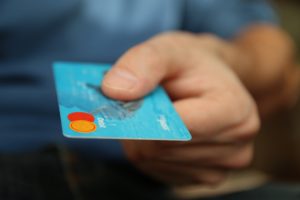International Student’s Guide to Setting Up a U.S. Bank Account
5 Steps to Opening a Bank Account
Having a U.S. bank account makes purchasing things in the U.S. much easier. You can deposit checks and safely store your spending money in your international bank account. If you have a job on campus or an internship, you will likely be able to direct deposit your paychecks into your bank account. Plus, with a U.S. bank account, you will not have to worry about international transaction fees every time you make a purchase. Opening a bank account for international students might seem intimidating, but don’t worry. This guide will walk you through the process step by step.
1. Choose a bank
There are several points to consider when deciding which bank you should use.
Proximity Does the bank have a branch that is easy for you to access if you need to visit in person? Do they have ATM’s in the city where you are studying? If you use an ATM that is not in your bank’s network, you may be charged an additional fee, so this is an important concern if you intend to use cash.
Offerings Some banks offer special incentives to students. These might include sign-up bonuses, free checking or easy money transfers. Compare offerings from different banks to find the one that’s right for you.
Fees Some bank accounts are free. Others charge a monthly fee. You may also find banks that charge overdraft, account closer or returned item fees. Consider what you may have to spend in order to use that bank.
Talk to your international student services office to narrow down your search. They have likely answered many international student banking questions and can help you find the right one for you.
2. Gather your paperwork
To open a U.S. bank account, you will need to prove your identity, address, and approval to live and study in the United States. In most cases, you will do this by providing the following documents:
• Passport
• College acceptance letter
• A document showing your current address – this could be a rental agreement, a utility bill or a letter on the college’s letterhead confirming your dorm room
• Secondary identification
Some banks might also ask for additional information such as:
• I-94 number, issued by US Customs and Border Protection and available on their website.
• Form I-20, issued by your school. This document is also known as the Certificate for Eligibility for Nonimmigrant Student Status.
• Social Security Number (SSN) or Individual Taxpayer Identification Number (ITIN) these numbers are issued by the IRS and used to identify taxpayers. If you have a paid internship or campus job, you are most likely eligible for an SSN or ITIN.
Remember to bring the money that you intend to deposit in your account. Most banks a require a minimum deposit to open an account. You can bring this money in the form of a check, cash or travelers check.
3. Go to the bank
Although it is possible to open a bank account online, walking into a local branch of your bank may be the better choice. That way you can talk face to face with a teller about any problems or concerns as an international student opening a bank account in the U.S. When you go to the bank, be sure to bring all of the required paperwork listed above.
4. Talk to a teller
At the bank, tell the receptionist or teller that you would like to open a bank account. Be sure to mention that you are an international student. They will either help you set up the account or direct you to someone who can. The process should include filling out some paperwork and providing your forms of identification. This is your time to ask questions about international student banking. Remember, tellers and other bank staff are there to help. If you don’t understand something, ask.
5. Protect your money
You may get a checkbook, ATM card or debit card to help you access your money. You should handle these account access tools with care. Treat them as you would treat cash. Don’t leave them lying around where anyone could pick them up. Store them in your wallet, a locked drawer or other private and secure place when not in use.
Keep in mind that you may not get your checkbook, ATM card or debit card right away. Instead, you may need to wait a few days while the bank mails you these account access tools.
What about online banks?
Online banks – such as Ally, Chime or Simple – are popular with college students and might be an option worth exploring as well. Although you won’t be able to go into a local branch to open your account, these banks may offer special deals to students. Online banks may also offer 24/7 customer support. Even if you choose a bank with local branches, most banks still offer online access to your accounts so you can make mobile deposits, check your balance online, and handle many other basic tasks from your computer screen.
